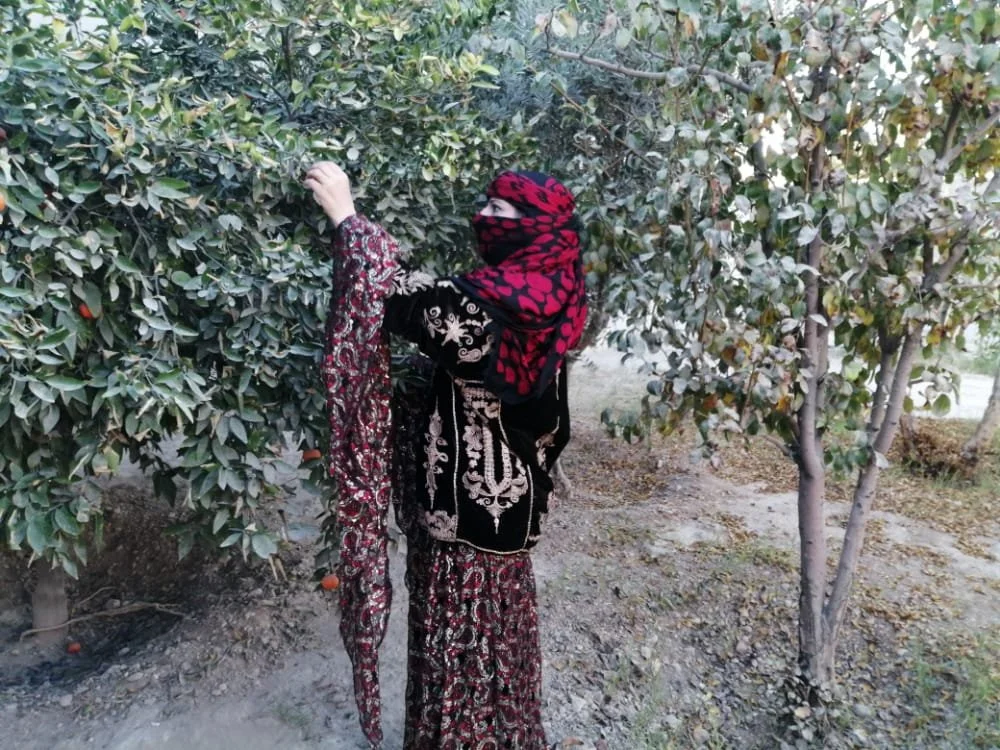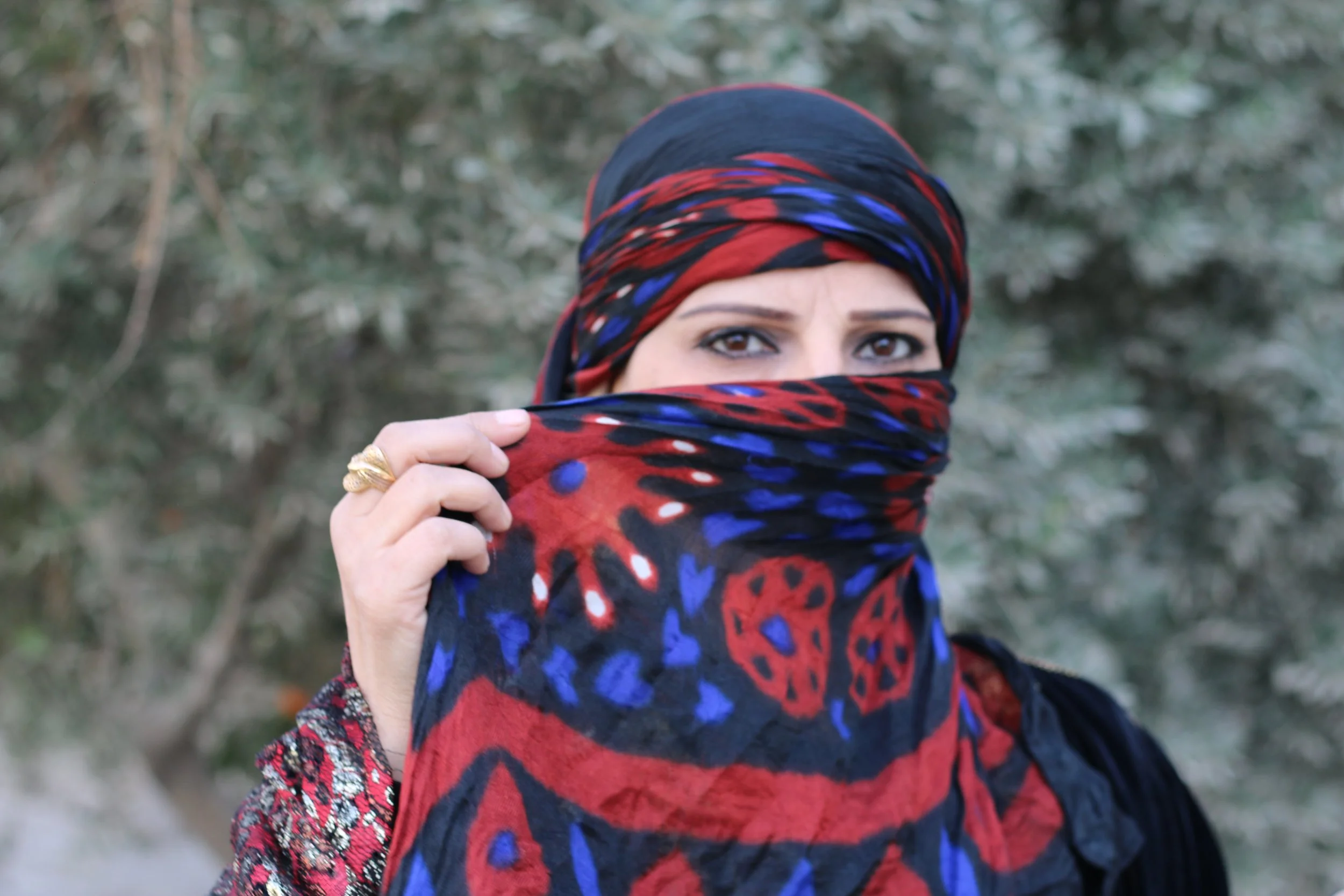الهباري Syria Aleppo Heritage Stamped Silk Headgear, Syria الهبريه من الكلمه الفراتيه لعصبه الراس ج- هباري
الهباري Syria Aleppo Heritage Stamped Silk Headgear, Syria الهبريه من الكلمه الفراتيه لعصبه الراس ج- هباري
🌿Video located in Additional Info
Know to Deir al Zor and Raqqa districts ( Euphrates Fashion) as Habrieh. Generally worn in Raqa ( red, black, and white ) by young womenn in the suburbs and rural areas of the Syrian and Iraqi Euphrates. Textiles are made in the Aleppo dye businesses. Method of design consists of resist lime dye wooden molds that are placed on a solid textile that is folded four times perfectly, pattern names include: volcano and pistachio nut motifs.
The solid black headgear according to interviews done on YouTube by Um Usamah, a resident devoted to preserving the Euphrates culture is reserved for married women. Spoke with a local resident of Raqqa in August 2021 and she had also assured me that the crown method-fashion for wearing these scarves is reserved for special occasions as chiffon and sequin are the widely used these days.
The “Habaree” plural for Habrieh do continue to be worn today. Fourth image I bought in the 1970s when tourists began buying the scarves as gifts to take back to Europe. The finished dyed textile is one meter square with four identical motifs resulting from folding the textile into four layers before stamping once. Stamping and weaving in generally done by Syrian men. Rinsing and unartful details are left to the women. There are exceptions but far in-between
Syrian Heritage and Textiles
Slk Habaree headgear from Aleppo







